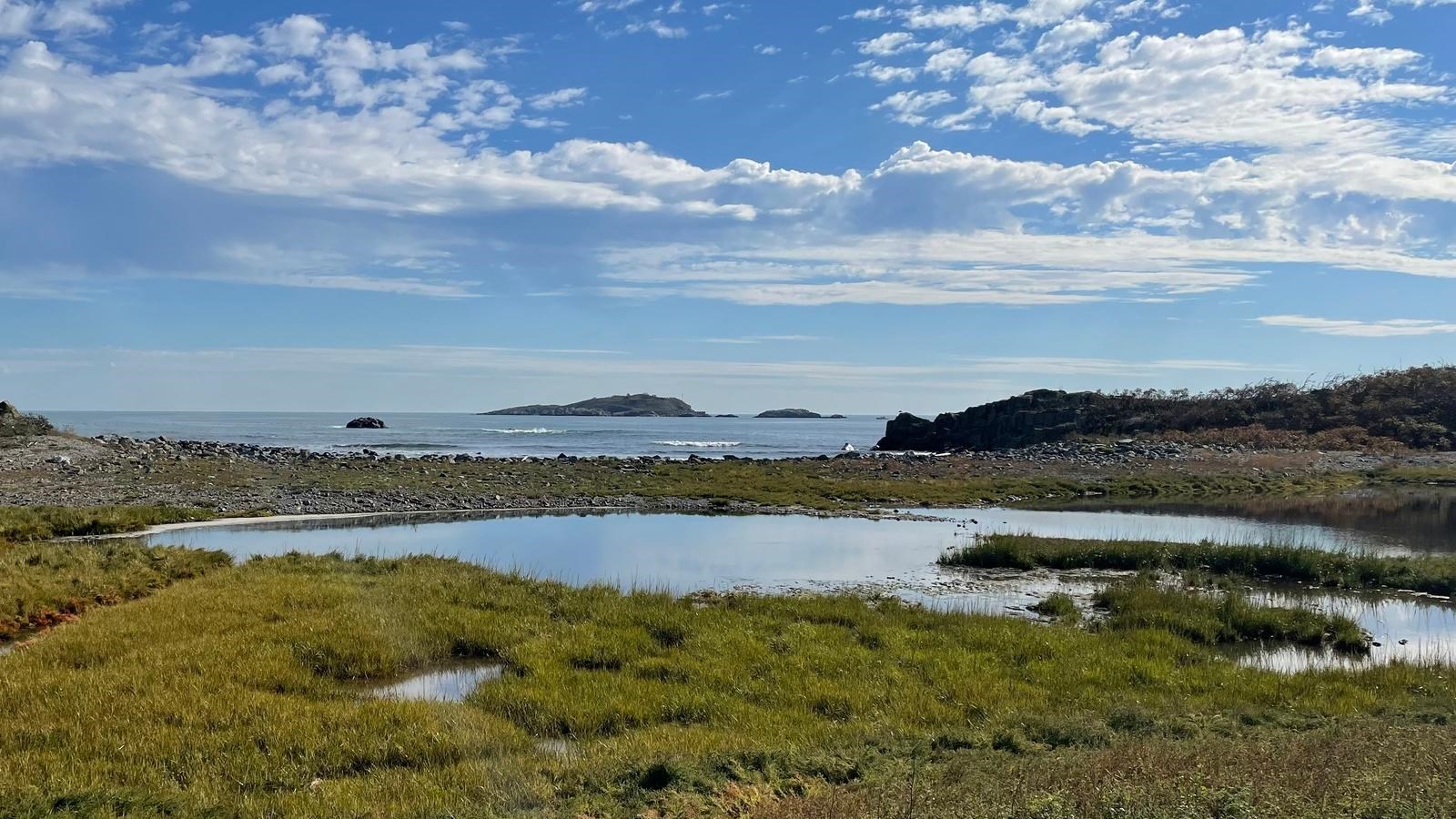Last updated: October 27, 2023
Place
Calf Island

NPS Photo/ Erin Drumm
Calf Island sits nine miles out from Boston in the harbor. Somewhere in the middle of Boston Light and The Graves Light, this 35-acre island is one of the most secluded in the harbor.
Prior to European colonization, Indigenous peoples likely used the resources on the island seasonally for thousands of years. First granted to Elder Brewster of Plimouth Colony in the 1600, Charles Apthorp later purchased the island. Both Brewster and Apthorp owned other properties in the harbor. The name "Calf Island" likely derives from Robert Calef, who purchased the island from the Apthrops sometime in 1713.
The treacherous waters of the outer harbor have led to wrecks on and just offshore the island. The Massachusetts Humane Society constructed a "hut of refuge" on the island in 1789, In an effort to aid survivors of these wrecks. James Turner owned the island in 1845, and built his home from two deckhouses that washed ashore from the wrecked steamer Ontario.1 During this time, a small community of lobster fishermen built small wooden shelters on the island.2 It is said, a vessel named Mollie Trim crashed ashore the island in January 1886 after a gale "blew up" and took the vessel straight toward the island. The only survivor, the captain, found a fisherman’s home on the island and received help.3
Calf Island also fostered a social scene. On summer Sundays in 1883, many rushed to the island hoping to catch illegal "pugilism" or boxing matches, only to scatter if the harbor police came too close.4
In 1902, Benjamin P. Cheney and his wife, actress Julia Arthur, built a colonial style, two-story summer estate with roofs used to collect rainwater. The Federal Government purchased the island from Cheneys for $46,500 during World War I much to their dismay. They never returned to the island.
The last of the Cheney estate were burned down in 1971, and in the 1990s vandals toppled one of two chimneys. Today, the island is a sanctuary for birds and still supports wild cherry, beach plum, tall grasses, chives, and mock orange.
Learn More...
Footnotes:
- James Turner later became the keeper of Bug Light at the western end of Brewster Spit.
- Olmsted Center for Landscape Preservation, Cultural Landscape Report: Boston Harbor Islands National & State Park, Volume 1: Historical Overview, (Boston: National Park Service, 2017), 26; Edward Snow, The Islands of Boston Harbor (Carlisle, MA: Commonwealth Editions, 2002), 209-210.
- Snow, The Islands of Boston Harbor, 209-210.
- Moses Foster Sweetser, King’s Handbook of Boston Harbor (Cambridge, MA: Moses King, 1883), 225-26.
- Snow, The Islands of Boston Harbor, 210.
